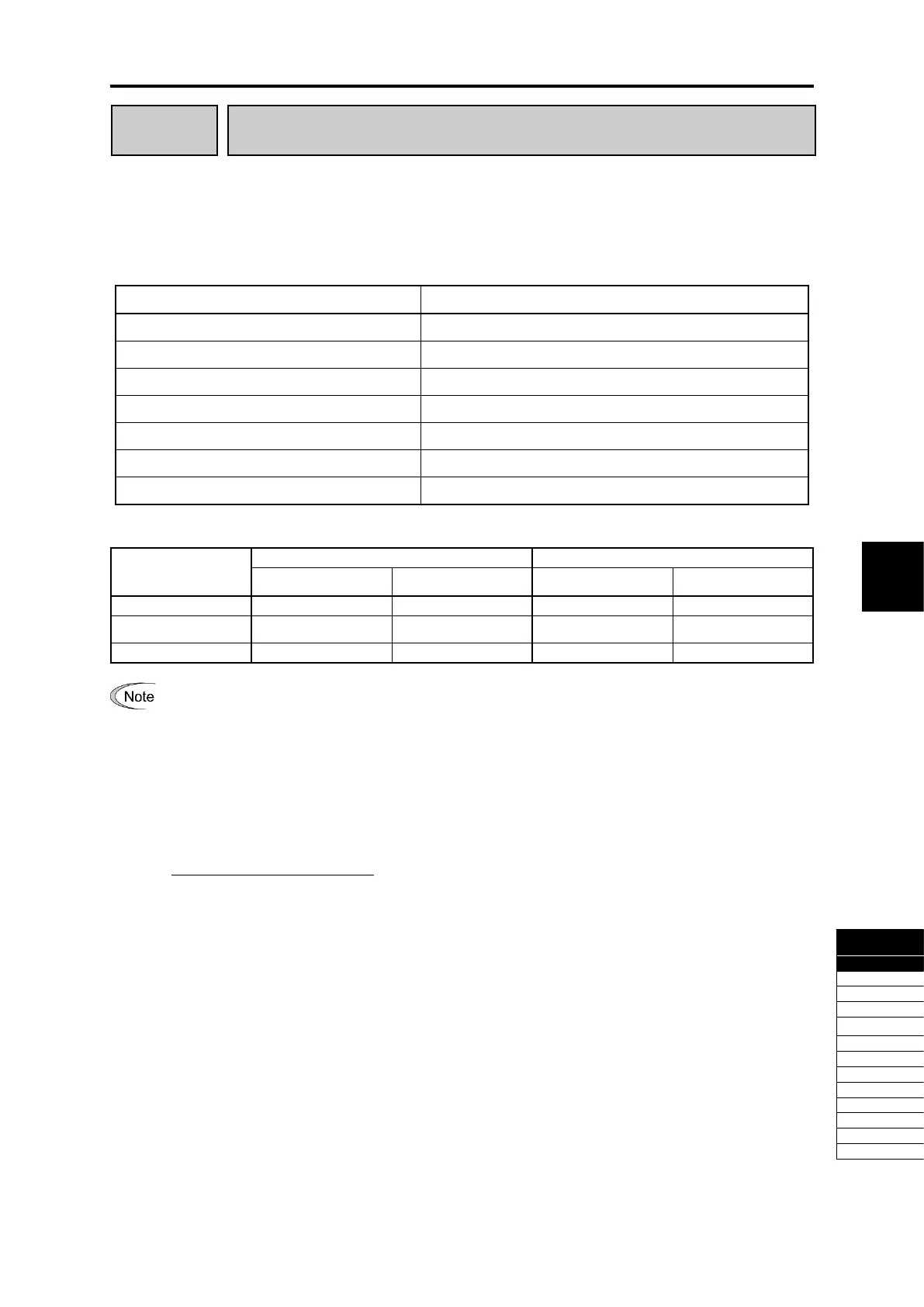(secondary) wiring.
Setting range of carrier frequency is as follows.
Specifying a carrier frequency that is too low will cause the output current waveform to have a large
amount of ripple. As a result, the motor loss increases, causing the motor temperature to rise.
Furthermore, the large amount of ripple tends to cause a current limiting alarm. When the carrier
frequency is set to 1 kHz or lower, therefore, reduce the load so that the inverter output current comes to
be 80 % or less of the rated current.
When a high carrier frequency is specified, the temperature of the inverter may rise due to the ambient
temperature rise or an increase of the load. If it happens, the inverter automatically decreases the carrier
frequency to prevent the inverter overload (0lV). With consideration for motor noise, the automatic
reduction of carrier frequency can be disabled. Refer to the description of H98.
It is recommended to set the carrier frequency at 5 kHz or above under vector control with speed sensor.
DO NOT set it at 1 kHz or below.
Running a permanent magnet synchronous motor at low carrier frequency may overheat the permanent
magnet due to the output current harmonics, resulting in demagnetization. When decreasing the carrier
frequency setting, therefore, be sure to check the allowable carrier frequency of the motor.
When using a Fuji standard permanent magnet synchronous motor at rated load, set the carrier frequency
to 2 kHz or higher.

